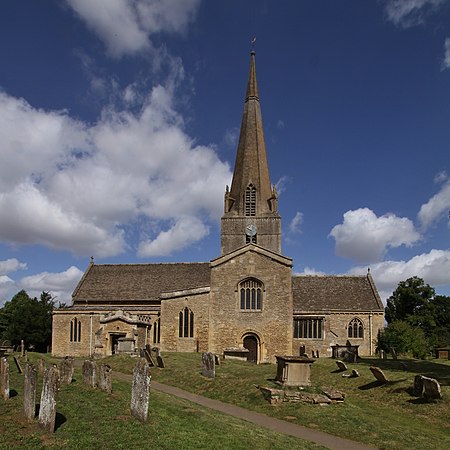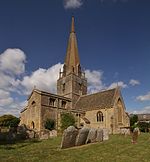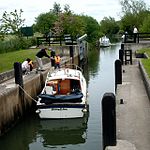Bampton, Oxfordshire
Civil parishes in OxfordshireCotswoldsDownton AbbeyOpenDomesdayPeople from Bampton, Oxfordshire ... and 3 more
Use British English from May 2012Villages in OxfordshireWest Oxfordshire District

Bampton, also called Bampton-in-the-Bush, is a settlement and civil parish in the Thames Valley about 4+1⁄2 miles (7 km) southwest of Witney in Oxfordshire. The parish includes the hamlet of Weald. The 2011 Census recorded the parish's population as 2,564. Bampton is variously referred to as both a town and a village. The Domesday Book recorded that it was a market town by 1086. It continued as such until the 1890s. It has both a town hall and a village hall.
Excerpt from the Wikipedia article Bampton, Oxfordshire (License: CC BY-SA 3.0, Authors, Images).Bampton, Oxfordshire
High Street, West Oxfordshire Bampton
Geographical coordinates (GPS) Address Nearby Places Show on map
Geographical coordinates (GPS)
| Latitude | Longitude |
|---|---|
| N 51.727 ° | E -1.544 ° |
Address
Wheelgate House
High Street
OX18 2JN West Oxfordshire, Bampton
England, United Kingdom
Open on Google Maps










